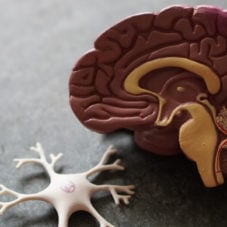Live Cultures
Taking Live Cultures With Antibiotics – Is It Safe To Do So?
If you’re taking antibiotics and are wondering if it’s safe to take it along with live cultures, you’ve come to the right place. In this article, we are going to talk about taking live cultures with antibiotics, when to take them, and possible side effects of their use during the same period.
Live culture supplements are increasingly becoming popular, and their parallel use with antibiotics is a frequent practice. Medical professionals became familiar with the concept of healthy gut flora and are increasingly prone to prescribe live cultures with antibiotics.
On the other side, patients are also well-informed about the positive aspects of live cultures. They know that antibiotics could damage good bacteria in their bowels, and they want protection. All in all, antibiotic treatment and adjoined use of live cultures has become a routine applied by many doctors.
Why Taking Antibiotics Is Necessary
Antibiotics are medications capable of saving human lives. Medicine before and after their discovery is not the same. Millions of people avoided a fatal outcome only because of antibiotics. Paradoxically enough, the literal meaning of the word antibiotic is “against life”. The name is the combination of the Latin word “anti”, which means against, and Greek word “bios”, which means life (1).
Antibiotics destroy bacteria, justifying their name from the microbiological point of view. Appropriate antibiotics can impressively improve symptoms and bring cure in seriously ill individuals with dangerous infections. Nothing is perfect, and this is also true for antibiotics. Besides destroying pathogenic bacteria, they could also negatively impact our gut flora.

Serious bacterial infections are clear reasons for the prescribing of antibiotics. Nonetheless, these life-saving drugs are used much more than it’s necessary. For example, even if the majority of upper respiratory tract infections (URTI) are of virus origin, many of them will be treated by antibiotics.
Fear from possible bacterial complications motivates a physician to think about treatment with antibiotics in all instances where symptoms slightly indicate a possible bacterial infection. Expectations of patients to get a powerful and fast-acting drug from the beginning of their symptoms present a great pressure to medical professionals.
On the global level, we have overprescribing of antibiotics. The consequence of the excessive use of antibiotics on a global scale is antibiotic resistance. On the individual level, the possibility of side effects of antibiotics increases with their frequent use.
Why Are Live Cultures Important?
Live cultures, also known as probiotics, means “for life”, which is the opposite compared to the meaning of the word antibiotic. Live cultures are “good bacteria.” When ingested via food or supplementation, these live cultures benefit your health (2).
Antibiotics can impact the equilibrium of gut flora with the possibility of serious side effects. Our gastrointestinal tract hosts more than 500 different bacterial species (2). These “good” bacteria from live cultures create a medium within the intestines that prevent the advancement of pathogenic or ‘bad’ microorganisms. There is a foundation for health problems if our beneficial microbes are not in balance.
Live cultures are used to prevent the dysbalance of gut flora or to treat a changed composition of intestinal microbes. The most frequently used live cultures include Lactobacillus and Bifidobacterium species. Live cultures are not like other supplements – they are live microorganisms. When our complex intestinal microbiological world is threatened or affected, live cultures are there to help.

Check out our 50 Billion CFU, 10 Strain Live Cultures & Fibre Supplement. Each bottle will last you a good 2 months, so you’ve got plenty of support for your gastrointestinal health.
Why Is Taking Live Cultures With Antibiotics So Important?
The naming of live cultures and antibiotics only make sense when we think about their impact on gut flora. Only then, life-saving medications, as antibiotics are, could be associated with the destruction of some form of life. They really could damage “good bacteria” inside our bowels with a consequent proliferation of pathogenic bacteria.
The two common diseases which could arise as a result of antibiotic therapy are antibiotic-associated diarrhoea and Clostridium difficile infection (3). Occasionally, life-threatening infections could occur. Change of homeostasis within the gut flora is potentially related to numerous diseases and these links present subjects of intensive research.
Live cultures help prevent antibiotic-associated diarrhoea
Live cultures are regarded, by many medical professionals, as supplements capable of preventing or treating side-effects of antibiotics at gut flora level. There are numerous scientific studies supportive of live culture use while taking antibiotics. Live cultures have a positive role in the prevention of antibiotic-associated diarrhoea in both adult and pediatric populations (4).
Moreover, various live culture formulations show beneficial effects, and preventative results are retained across different antibiotic regimens. Also, live cultures are successfully used in various indications for treatment with antibiotics (4).
Antibiotics are prescribed frequently in the pediatric population and consequently, antibiotic-associated diarrhoea in children is a common problem. Even the strictest systematic reviews recognise the ability of antibiotics to alter the microbial balance within our gastrointestinal tract (5).
Kids of all ages can also benefit from live cultures. Check out our sugar-free Kids Live Cultures & Fibre supplement. Each capsule contains 6 billion CFU and will work round the clock to protect your child’s tummy.
Live cultures help restore balance in gut flora
Live cultures are also recognised as supplements capable of gut flora restoration. Strains most frequently used in live cultures, namely Lactobacillus and Bifidobacterium, are efficacious in preventing antibiotic-associated diarrhoea due to amoxicillin-clavulanic acid, frequently used antibiotic (6).
The particularly frightening consequence of excessive antibiotic use is Clostridium difficile infection. This type of infection could be life-threatening when caused by multi-resistant strains of this microorganism. The disturbance of gut flora by antibiotics may lead to decreased resistance to dangerous microbes such as Clostridium difficile (7).

Based on systematic review and meta-analysis of 31 randomised controlled trials including 8672 patients, there are pieces of evidence that indicate the ability of live cultures to prevent Clostridium difficile associated diarrhoea (7). Clostridium difficile associated diarrhoea presents the most serious form of antibiotic-associated diarrhoea and is linked to significant morbidity and mortality (8).
Live cultures help improve the results of antibiotics
In some indications, live cultures improve the results of antibiotics. When used with antibiotics in the treatment of recurrent bacterial vaginosis and aerobic vaginitis, oral live cultures prolong the time of remission (9).
Note: If you have these female issues, our Women’s Live Cultures & Fibre supplement is specifically designed to help you. Each capsule contains 5 billion CFU, Crantiva Cranberry Juice Powder, and D-Mannose.
In the treatment of Helicobacter pylori infection, one of the therapeutic regimens includes the use of proton pump inhibitor, bismuth, and two antibiotics for 14 days. When live cultures are added to this quadruple therapy, the final results are more than satisfactory (10). This therapy showed good results across different antibiotic resistance profiles of Helicobacter pylori.
Parallel consumption of live culture supplements and antibiotics in the pediatric population with recurrent urinary tract infections showed more efficacy compared to cases of antibiotics use alone (11).
Best Timing For Taking Live Cultures With Antibiotics?
There are different forms of live culture supplements. For example, we have live cultures in the form of capsules or tablets. Drinks containing these cultures, such as yoghurt and kefir, are well-known around the world. These beneficial microorganisms must withstand the acidic environment of the stomach to reach the intestines, where they exert their therapeutic potential.
Depending on the live culture supplement form, these should be taken on an empty stomach or with some food. It’s very important to read the instruction for patients since there is not a unique rule. Non-enteric coated supplements could serve as an example. They should be taken just before a meal or with food containing some fats (12).
The same thing goes for antibiotics, too. They also come in different forms and must be able to reach the intestines. Some of them are taken on an empty stomach, others with food. Again, the manufacturer’s instruction for patients is highly important and generalisation is not possible.
On the other hand, it sounds logical that taking live cultures and antibiotics at the same time is not a good idea. Simply because there is a possibility that antibiotics would destroy live culture strains once they get into contact within the intestines. Live cultures containing good bacteria should be separated from antibiotics by at least two hours (2).

Also, if you’re taking Saccharomyces bulardii supplements, it’s important to know that it is actually yeast and hence naturally resistant to antibacterial antibiotics (13). This kind of supplement could be susceptible to antimycotics.
Can You Take Live Cultures With Antibiotics Without Side Effects?
All medications and supplements could lead to adverse events. Antibiotics and live cultures are not an exception. Taking two substances during the same period increases the possibility of side effects. Next to antibiotic-associated diarrhoea and Clostridium difficile associated diarrhoea, antibiotics may produce serious allergic reactions.
Live cultures should be avoided in patients who are critically ill in intensive care units, critically sick infants, and all individuals whose immune system is seriously immunocompromised (14).
It’s hard to find in medical literature anything specific about side effects in instances when antibiotics and live cultures are used together. Moreover, some studies demonstrate a reduction of treatment-related side effects and improved patients’ compliance, when live cultures are added to antibiotics (10).
The ‘good’ bacterium Lactobacillus plantarum is capable of preventing some milder gastrointestinal symptoms associated with the use of antibiotics (15). Supplementation with live cultures for Helicobacter pylori eradication may be effective in decreasing therapy-related adverse events (16). The yeast Saccharomyces bulardii is also capable of reducing the incidence of total side effects and certain gastrointestinal adverse events of Helicobacter pylori eradication therapy (17).
Taking Live Cultures With Long-Term Antibiotics
In some clinical situations, antibiotics are used for a much longer time than a week or two. Longer use increases the probability of side events even though live cultures are generally considered safe and well-tolerated supplements (1). For many indications, they are taken for months with an excellent safety profile.
A relevant example of parallel, long-term use of antibiotics and live cultures is the presence of recurrent urinary tract infections in the pediatric population. Some studies stress the safety and efficacy of taking live cultures with long-term antibiotics (11). This is not a surprise since numerous scientific articles reveal that live cultures successfully repair gut flora when their balance is disrupted.
Conclusion
As you’ve learned in this article, it is generally acceptable to take live cultures with antibiotics. Just keep in mind the 2-hour rule, that is, take your live culture supplement 2 hours after taking the antibiotic (or vice versa). Lastly, for best results, don’t forget to read the manufacturer’s instructions for both antibiotics and live cultures.
References
(1) Brightman C. Antibiotics in general practice. Trends in Urology & Men‘s Health. 2014;Nov/Dec:39-43.
(2) Williams NT. Probiotics. Am J Health-Syst Pharm. 2010; 67:449-458.
(3) Rehman A, Heinsen FA, Koenen ME, Venema K, Knecht H, Hellmig S, et al. Effects of probiotics and antibiotics on the intestinal homeostasis in a computer controlled model of the large intestine. BMC Microbiology. 2012;12(47)
(4) Videlock EJ, Cremonini F. Meta-analysis: probiotics in antibiotic-associated diarrhoea. Aliment Pharmacol Ther. 2012;35(12):1355-1369.
(5) Johnston BC, Goldenberg JZ, Vandvik PO, Sun X, Guyatt GH. Probiotics for the prevention of pediatric antibiotic-associated diarrhea. Cochrane Database of Systematic. 2011;11:CD004827.
(6) García Trallero O, Herrera Serrano L, Bibián Inglés M, Roche Vallés D, Rodríguez AM. Effect of the administration of a probiotic with a combination of Lactobacillus and Bifidobacterium strains on antibiotic-associated diarrhea. Rev Esp Quimioter. 2019;32(3):268-272.
(7) Goldenberg_JZ, Yap_C, Lytvyn_L, Lo_CKF, Beardsley_J, Mertz_D, Johnston_BC. Probiotics for the prevention of Clostridium di_icile-associated diarrhea in adults and children. Cochrane Database of Systematic Reviews 2017;12:CD006095.
(8) Selinger CP, Bell A, Cairns A, Lockett M, Sebastian S, Haslam N. Probiotic VSL#3 prevents antibiotic-associated diarrhoea in a double-blind, randomized, placebo-controlled clinical trial. J Hosp Infect. 2013;84(2):159-165.
(9) Heczko PB, Tomusiak A, Adamski P, Jakimiuk AJ, Stefański G, Mikołajczyk-Cichońska A, et al. Supplementation of standard antibiotic therapy with oral probiotics for bacterial vaginosis and aerobic vaginitis: a randomised, double-blind, placebo-controlled trial. BMC Womens Health. 2015;15:115.
(10) Poonyam P, Chotivitayatarakorn P, Vilaichone RK. High Effective of 14-Day High-Dose PPI- Bismuth-Containing Quadruple Therapy with Probiotics Supplement for Helicobacter Pylori Eradication: A Double Blinded-Randomized Placebo-Controlled Study. Asian Pac J Cancer Prev. 2019;20(9):2859-2864.
(11) Mohseni MJ, Aryan Z, Emamzadeh-Fard S, Paydary K, Mofid V, Joudaki H, et al. Combination of Probiotics and Antibiotics in the Prevention of Recurrent Urinary Tract Infection in Children. Iran J Pediatr. 2013;23(4): 430–438.
(12) Tompkins TA, Mainville I, Arcand Y. The impact of meals on a probiotic during transit through a model of the human upper gastrointestinal tract. Benef Microbes. 2011;2(4):295-303.
(13) Czerucka D, Piche T, Rampal P. Review article: yeast as probiotics –Saccharomyces boulardii. Alimentary Pharmacology and Therapeutics. 2007;26(6):767-778.
(14) Didari T, Solki S, Mozaffari S, Nikfar S, Abdollahi M. A systematic review of the safety of probiotics. Expert Opin Drug Saf. 2014;13(2):227-239.
(15) Lönnermark E, Friman V, Lappas G, Sandberg T, Berggren A, Adlerberth I. Intake of Lactobacillus plantarum reduces certain gastrointestinal symptoms during treatment with antibiotics. J Clin Gastroenterol. 2010;44(2):106-112.
(16) Lv Z, Wang B, Zhou X, Wang F, Xie Y, Zheng H, et al. Efficacy and safety of probiotics as adjuvant agents for Helicobacter pylori infection: A meta‑analysis. Exp Ther Med. 2015;9(3):707-716.
(17) Zhou BG, Chen LX, Li B, Wan LY, Ai YW. Saccharomyces boulardii as an adjuvant therapy for Helicobacter pylori eradication: A systematic review and meta-analysis with trial sequential analysis. Helicobacter. 2019;24(5):e12651.





